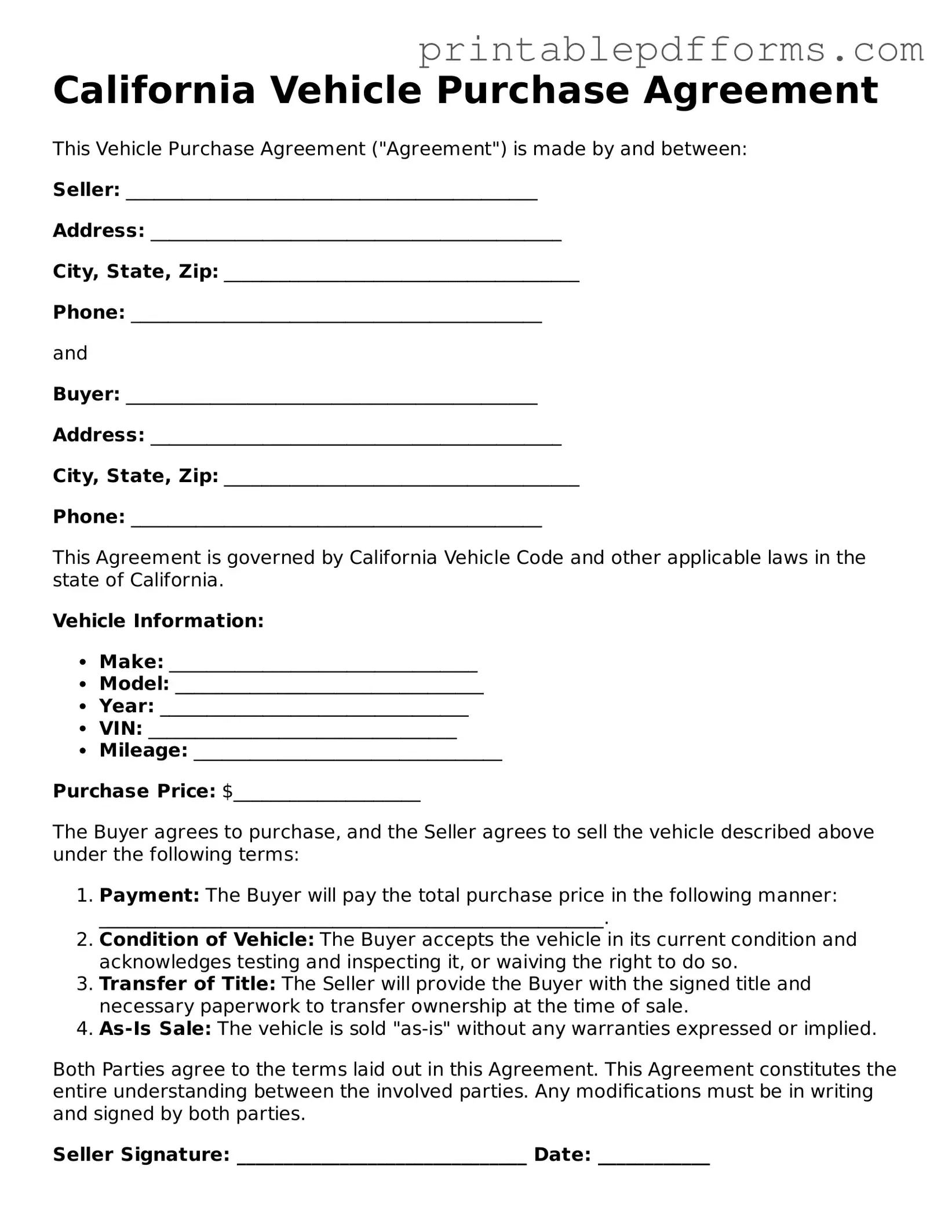California Vehicle Purchase Agreement
This Vehicle Purchase Agreement ("Agreement") is made by and between:
Seller: ____________________________________________
Address: ____________________________________________
City, State, Zip: ______________________________________
Phone: ____________________________________________
and
Buyer: ____________________________________________
Address: ____________________________________________
City, State, Zip: ______________________________________
Phone: ____________________________________________
This Agreement is governed by California Vehicle Code and other applicable laws in the state of California.
Vehicle Information:
- Make: _________________________________
- Model: _________________________________
- Year: _________________________________
- VIN: _________________________________
- Mileage: _________________________________
Purchase Price: $____________________
The Buyer agrees to purchase, and the Seller agrees to sell the vehicle described above under the following terms:
- Payment: The Buyer will pay the total purchase price in the following manner: ______________________________________________________.
- Condition of Vehicle: The Buyer accepts the vehicle in its current condition and acknowledges testing and inspecting it, or waiving the right to do so.
- Transfer of Title: The Seller will provide the Buyer with the signed title and necessary paperwork to transfer ownership at the time of sale.
- As-Is Sale: The vehicle is sold "as-is" without any warranties expressed or implied.
Both Parties agree to the terms laid out in this Agreement. This Agreement constitutes the entire understanding between the involved parties. Any modifications must be in writing and signed by both parties.
Seller Signature: _______________________________ Date: ____________
Buyer Signature: _______________________________ Date: ____________
